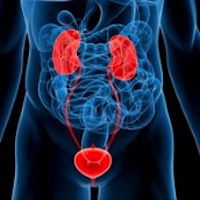 Smart Citations
Smart CitationsSee how this article has been cited at scite.ai
scite shows how a scientific paper has been cited by providing the context of the citation, a classification describing whether it supports, mentions, or contrasts the cited claim, and a label indicating in which section the citation was made.
Perineural invasion in prostate needle biopsy: Prognostic value on radical prostatectomy and active surveillance
Purpose: The aim of this study was to evaluate the clinical impact of perineural invasion (PNI) in prostate biopsy in patients submitted to radical prostatectomy and on active surveillance (AS). Materials and methods: We performed a single center, retrospective, cohort study on patients diagnosed with clinically localized prostate cancer and submitted to radical prostatectomy between January 2010 and December 2016. We evaluated clinical and anatomopathological characteristics from the biopsy and radical prostatectomy specimen and correlated with biochemical recurrence (BCR) using a survival analysis. We also evaluated the impact of PNI in patients with criteria for active surveillance. Results: The cohort analyzed consists of 107 patients, with a mean age of 63.1 years and a mean PSA prior to biopsy of 7.8 ng/ml. In prostate biopsy, 66.4% of the patients had a Gleason score of 6, 30.9% had a Gleason score of 7, and 2.7% had a Gleason score of 8 or higher, with PNI being detected in 57 (53.3%) of the patients. Regarding the anatomopathological characteristics of the surgical specimen, invasion of the seminal vesicles was observed in 6.5%, lymph nodes involvement in 9.3% and positive surgical margins in 27.1% of the cases. During follow-up, BCR was recorded in 24.3% of cases. Clinicopathological features were stratified according to the presence or absence of PNI, with statistical significance in relation to the Gleason Score (p = 0.001), pathologic T stage (p = 0.001), D’Amico risk (p = 0.002) and upstaging of the Gleason score (p = 0.045). The survival analysis revealed a relationship between PNI and BCR (hazard ratio = 2.98; 95% CI: 1.36-6.58; p = 0.007). Regarding the men potentially eligible for AS, the presence of PNI on the biopsy presented a significant relation with Gleason upgrade (p = 0.004) and extraprostatic extension (p = 0.017). Conclusions: The presence of PNI in prostate biopsy is related to adverse anatomopathological factors, being a potential predictor of BCR and have a possible role in the selection of patients for AS.
Downloads
Citations
10.17816/uroved71614
10.1016/j.fpurol.2024.10.005
10.3390/cancers14174065
10.22037/uj.v20i.7835
10.1111/and.14395
How to Cite
PAGEPress has chosen to apply the Creative Commons Attribution NonCommercial 4.0 International License (CC BY-NC 4.0) to all manuscripts to be published.

 https://doi.org/10.4081/aiua.2020.4.330
https://doi.org/10.4081/aiua.2020.4.330





